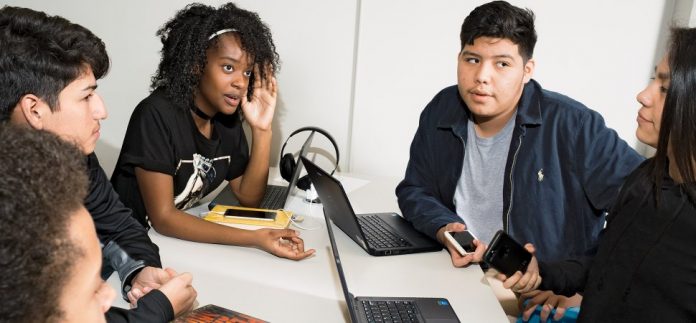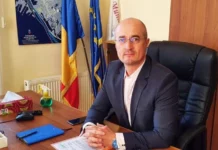
Inside the growing education movement that’s training kids to be entrepreneurs.
There were 17 affiliated Children’s Business Fairs in the U.S. in 2016. Sandefer expects there to be 50 this year. “That’s all with zero PR–just word of mouth,” he says as he surveys the scene on his lawn: 110 booths manned by 230 local kids, who’ll sell to about 2,300 customers. The cuteness goes without saying–it’s your neighborhood lemonade stand on steroids–but Sandefer sees something more important happening.This is no hipster flea market. The sellers are kids as young as 5 years old. We’re on the oak-shaded grounds of the Pease Mansion–also known as Woodlawn–a legendary white-columned edifice atop a hill in the city’s toniest historic district. The house belongs to Jeff Sandefer, a billionaire Texas oilman, and his wife. Three decades ago, he began educating entrepreneurs at the University of Texas; later, he and others launched the independent Acton School of Business, which runs an MBA program. Then he and his wife co-founded Acton Academy, a private Austin K-12 school that has spun off affiliate locations in 25 other cities as far-flung as Kuala Lumpur; 26 more are slated to open this year. He also started, as an offshoot of that school, the Acton Children’s Business Fair, a small but fast-growing series of events like the one here at his house, where kids aged 5 to 15 spend half a day selling goods and services they create.
Across the U.S., a nascent movement is educating kids in the precepts of entrepreneurship. In Austin alone, there are foundations, afterschool programs, summer programs, high school classes, and more. “I recently tried to put a list together of everyone in Austin doing something around youth entrepreneurship. It was three pages long,” says Leigh Christie, executive director of the Entrepreneurs Foundation of Central Texas, which runs several youth programs including Lemonade Day Austin (the name explains it), which is the local offshoot of a Houston-born program that now operates in 60 cities. This month, South by Southwest will feature multiple sessions about youth entrepreneurship and a youth startup pitch competition.
One of Austin’s most ambitious programs is what’s being billed as the nation’s first K-12 public school entrepreneurship track, at David Crockett High School and its feeder elementary and middle schools. The program culminates in an incubator class in which teams of students launch businesses and compete for funding, followed by an accelerator class in which they run the businesses. The Crockett program, now in its second year, was inspired by a four-year-old high school-only program in suburban Chicago, at Barrington High School. Members of Barrington’s business and education communities created a nonprofit, INCubatoredu, to license its incubator-class curriculum to schools around the country, and more than 60 schools in 13 states have signed up.
At a time when Mark Zuckerberg and Elon Musk enjoy rock-god status and families gather to watch Shark Tank, it’s no surprise that we’d start nudging our kids toward becoming business creators. It’s a powerful thing, after all. You call the shots. You solve problems and invent things. You create jobs.
As Inc. readers know, though, entrepreneurship isn’t kid stuff. It takes courage and resilience. Most new businesses don’t make it. It’s long been widely held that founders are born, not made, and a recent study by researchers at London’s King’s College found some genetic evidence to support that idea. Whether or not that argument holds–evidence is thin–entrepreneurship is not for everyone, so why act like it is?
To Victor Hwang, VP of entrepreneurship at the Kauffman Foundation, the answer is simple. Work has changed. We all must become entrepreneurs, or at least like entrepreneurs. “The school system has long taught for industrial jobs: how to find a job, how to fill a job. But the jobs of the new economy are ones where you have to be entrepreneurial.” The youth entrepreneurship movement, he says, is “more primal than a popular trend; it’s a response to macroeconomic forces.”
“The idea that you go work for IBM for 30 years and get a pension is antiquated,” says Craig Shapiro, associate superintendent for high schools in the Austin Independent School District, a position he assumed after starting the Crockett program, Student Inc. “By the year 2020, 40 percent of the jobs will be entrepreneurial in nature. Yet we have a factory-style education system that doesn’t prepare kids” for such a world.
What Shapiro, Sandefer, and the others leading this youth entrepreneurship movement are doing doesn’t look like factory-style education. It looks messy. It often looks dubious–much as startups do. Sometimes, as at the Acton Children’s Business Fair, it looks inspired. Forget the too-familiar question: Can entrepreneurship be taught? The one these new initiatives pose is subtler, and far more significant: Can entrepreneurship–and, more important, the traits that underpin successful entrepreneurs–be learned?
“We want them to say, ‘Hey, I sold something and made some money. That was fun, and I want to try again.'” Jeff Sandefer, whose dedication to educating entrepreneurs has played a big role in making his native Austin a central player in such efforts.
When Jeff Sandefer was a teenager in Abilene, his oilman dad insisted he spend a couple of summers doing manual labor in the oil fields. The summer before his senior year, he was working on a crew of day laborers who repainted oil-field storage tanks. He noticed that many of the crew spent only about a third of their time actually working. “So I came up with this idea to start a company and hire our high school football coaches, who weren’t working in the summer,” he remembers. “They had the pickup trucks to haul equipment, and they could bring in their players.” Crucially, he decided to pay by the tank painted, not by the hour. Veteran laborers painted one battery of tanks every three days. The coaches started painting three a day. “It was nine times more productive at probably a 10th of the capital cost!” says Sandefer. The business made roughly $100,000 in profit that summer, he says.
It wasn’t until much later that Sandefer, who’s 56, realized he’d grown up in an environment that fostered the insight that made that success possible. “I grew up watching my dad do deals in oil and gas,” he says. “The talk around the dinner table was selling and deals, and I used to think everyone had that experience and knew what I did.” At an early age, he would go to his neighbors to ask if they had junk they wanted hauled out of their garages, and then hold a garage sale to sell it. “I was an asset fox,” he says. The instinct persisted: He made a half-billion dollars by the time he was 30 by developing wells that the oil giants deemed too small to bother with.
He’s discussing his path while sitting at a small conference table in the administrative office of the Acton Academy. Nearby is a bookshelf packed with titles like The Lean Startup, by Eric Ries, and Disrupting Class, by Clayton Christensen, alongside a stack of slim books called A Field Guide for the Hero’s Journey, which Sandefer wrote with Robert Sirico, a Catholic priest from Michigan. (Sandefer was on the board of Sirico’s Acton Institute for the Study of Religion and Liberty, which gave Sandefer’s venture its name.) The “hero’s journey” is Sandefer’s term for pursuing a “life of meaning,” another favorite phrase. To him, entrepreneurship is doing something you’re good at, that you enjoy doing, and that the world needs (or at least that people will pay you for). Much at the Acton Academy is built to further that pursuit. As at a Montessori school, Acton teachers are guides–in fact, that’s what they’re called–who put kids to work on projects and then point them to resources to solve problems on their own. Those resources include online simulation games Sandefer paid to have developed, in which players learn to spot production bottlenecks in a factory, or compete to sell water without getting into a price war. (He developed the games for his MBA school but has found his younger pupils benefit from them too.)
To Sandefer, the most important thing about the Children’s Business Fair is that the kids show up and launch and run something for a day. “We want them to just say, ‘Hey, I sold something and made some money. That was fun, and I want to try again.’ That’s the spark that leads to everything else.”
One of Sandefer’s favorite student stories is that of Reese Youngblood, a preternaturally well-spoken eighth grader who last year made $3,000 profit at the three-hour business fair selling hand-illustrated stationery she designed. In previous years, she says in an airy classroom across a manicured yard from the Acton office, she drew pastel portraits, sold indigo-dyed caftans, ponchos, and scarves, and partnered with her brother to sell scavenger-hunt kits. “I’ve always been an artist–that’s just what I like to do,” she says. “The business fair helped me find ways to link entrepreneurship and my passion for art.” She now sells her designs on stationery and journals in two Austin boutiques.
While few of the dozen Acton middle schoolers I meet have Youngblood’s singular focus or her traction toward building a real business, what they’re learning is just as important. Tate Staker, a seventh grader, has participated in the fair for five years, mostly selling games he designs. This year, it was a board game, Manatee Warfare, and it sold out well before the end of the event, Staker says. He also learned about the downside of fearing sunk costs. “It cost me a lot to make each game–I had cards printed off this website, and got boxes and dice,” he says. “So I didn’t buy as much as I could have, and that stopped me from making as much profit as I could have. If I had bought more, it would have been better, but I was afraid my sunk costs would be too high.”
But specific business insights aren’t really the point, Sandefer says; the process is what matters. Every four to six weeks during the school year, Acton students take on a different project–one is explicitly entrepreneurial–and every week they have different “deliverables” related to the project. For the entrepreneurial project, those deliverables might be: calculate your costs per item; calculate how much of each material you’ll need, and how much you’ll need to sell to profit; design the product; and determine how you’ll test it, package it, and market it. Working at their own pace, they practice subjects from math to art, as well as critical thinking, self-motivation, and public speaking.
Of course, the students at Acton come from households that push them to achieve. Staker’s family moved to Austin from Hawaii solely to send him to Sandefer’s school. Though the Children’s Business Fair is open to all kids, Sandefer knows his efforts aren’t reaching a huge chunk of underprivileged communities. If youth entrepreneurship education aims to help a generation navigate a new world, it will need to go a lot wider.
Across town and a world away from Acton’s immaculate campus, David Crockett High School is a blocky, mid-’60s building that houses 1,500 primarily Hispanic and lower-income students. Less than a decade ago, it was in danger of being shut down, beset by frequent fights and poor academic performance. In 2008, the district hired a young principal from the Bronx in New York City, Craig Shapiro, and since then, the school has become a celebrated success. With the launch of the Student Inc program two years ago, Crockett has emerged as a model for other local schools.
Adam Miller, one of two instructors for the incubator class, strides to the front of room 150, a windowless former lecture hall renovated to look like a startup office, complete with rolling whiteboards, stand-up tables, and modular seating clusters. The 45-year-old Miller, who can only be described as the cool teacher–tousled hair; motorcycle boots and skinny brown jeans; says “Awesome!” a lot–generally wanders from group to group, like Acton’s guides, keeping students on task and acting as a sounding board.
It’s a week until finals, but Miller reminds the 20-some kids that, rather than take an exam, they’ll turn in their MVP (Lean Startup-speak for “minimum viable product”) slide decks so they can be ready to pitch their companies after winter break to a panel of founders, who will give them feedback. “You’ll be working on that today,” Miller explains. “Next Monday, we have a coach coming in to talk about market sizing. She’ll share some information that you can include in your decks.” The program enlists local entrepreneurs as mentors and guest lecturers. “OK, guys. Get to work!”
Today’s class, of juniors and sophomores, is the first to go through Crockett’s incubator program. Their year will culminate in a Shark Tank-style pitch competition to score $2,500 grants from local VC firm Notley Ventures; next year, they’ll run their companies in an accelerator class.
That’s the capstone to Student Inc, which begins in elementary school with a program called Microsociety, in which the whole school runs a mock small town complete with businesses and government agencies, and holds regular market days in which the town comes to life. In middle school, kids on the entrepreneurship track run an on-campus store that sells school-spirit gear such as T-shirts and beanies.
It’s a sprawling plan, with many more pitfalls than an annual fair, and its launch hasn’t been easy or smooth. “It took three months to get the kids out of the order-taker model, where they expect us to tell them what to do,” says Shapiro. The school has had trouble attracting a diverse group to the program; the kids so far skew male and white, and most come from the advanced-placement program. Among the feeder elementary and middle schools, several have struggled to implement the new programs. For their part, some students complain that things seem disorganized, that lessons aren’t aligned with their businesses’ stage of development. One says that “we feel like we’re being forcibly dragged through the curriculum.”
Still, there have been clear successes. Last year, a group of sophomores participated in a city-run program called ReVerse Pitch, competing against grownup entrepreneurs to present potential business ideas to reuse waste materials that would otherwise end up in landfills. The Crockett students made it to the final round of the competition, with a plan to turn unsellable glassware from Goodwill into landscape pebbles. This year, three student groups participated in ReVerse Pitch, and one of them has continued to develop its idea for the incubator class: Re-Cover Austin, which will turn discarded vinyl street banners into shade canopies for food-truck parks.
“Food trucks are an expanding market–there are 2,000 in Austin now,” explains Isaac Estrada, one of the students working on Re-Cover Austin, who says he’s slipped into the role of keeping everyone on task. “We think we can get low-cost labor to sew them into canopies”–ideally, he hopes, by partnering with the Multicultural Refugee Coalition, which provides opportunities for international refugees as they settle in Austin. Estrada says he’s shy and would seize up in front of groups, but now he speaks with a casual confidence that surprises even him: “Getting up in front of people to pitch was something I never would have been able to do last year, and I have done it twice this year.”
Another student, Kain Evans, used to sleep through his classes and bring home C’s and D’s, but the Student Inc classes have “pretty much changed my life,” he says. “I used to think I would grow up and get a restaurant job and then work my way up the corporate ladder like my parents did, but this has inspired me to want to go do my own thing.” Over the summer between sophomore and junior years, he says, “there were mornings I’d wake up and go, ‘That’s a good idea–why isn’t that a business?’ And I’d write down financial plans and logistics and take them to my friends. We’d toss ideas back and forth all summer like that.”
Other students have floundered. One pitch a group shows me includes a series of PowerPoint slides, all empty but for labels like “Title” and “Financial Model”–despite the looming due date. Of the eight groups in the class, Miller says, four or five have gelled and begun the transition from “sitting around coming up with ideas to really chasing them down.” One of his biggest tasks is lighting a fire under all of the groups, but he admits that ultimately it comes down to that underlying drive: “It’s easy to be a wantrepreneur, but it takes a special kind of student to make that leap.”
“I’d write down financial plans and take them to my friends. We’d toss ideas back and forth all summer like that.” Kain Evans
Miller’s point returns to the big question: Does it take innate entrepreneurial traits– passion, vision, risk tolerance, persistence, and leadership–to make that leap? Maybe, but maybe less than you would think. Researchers at the University of Minnesota have shown, for instance, that genetics can predict successful leaders only about 30 percent of the time. To put this differently, in most cases people learn to be leaders–and even when an entrepreneurial trait appears to be innate in someone, it may still be learned by someone else. Just as Sandefer’s childhood moneymaking schemes were likely spurred by table talk at dinner, what and how kids learn in school are likely to affect their chances of becoming entrepreneurial. What drives programs like the Children’s Business Fair and Crockett’s Student Inc is an aim to develop the traits of entrepreneurship, regardless of what careers the students ultimately choose.
The very mission of INCubatoredu, the curriculum Crockett licensed from the group in Barrington, Illinois, puts it plainly: “Entrepreneurial skills are valuable to students, whether they see themselves going into business or not. In the real world, where simple answers are few and far between, where change is constant, competition is fierce, and the careers of tomorrow aren’t yet known, students armed with an entrepreneur’s toolkit will have a distinct advantage.”
Still, Millennials have, so far, lagged behind those their age in previous generations when it comes to creating businesses, according to the Kauffman Foundation, despite its being cheaper and easier than ever to start a company. Can these programs help reverse that slide for Gen-Zers? The explanations for this shortfall usually involve a hangover from the recession and crushing levels of student debt. Shapiro, the former Crockett principal, proposes an additional explanation: a nationwide overreliance on tests that push schools to teach little more than basic facts. “We went to the standardized testing regime” a generation ago, he says. “Here are your products.”
“The U.S. beats itself up and says our math and science scores are testing lower than other countries’, and we should focus on that, but it doesn’t play to the advantages the U.S. has,” says Victor Hwang, the Kauffman Foundation VP. “Where the U.S. has excelled is in finding answers where there’s ambiguity. The challenge is that there are no good established metrics for that. How do you measure creative instinct or entrepreneurship, coming up with a product that nobody else thought was possible? That’s what these programs are moving toward addressing.”
It’ll be years before anyone knows if the new approach turns out more entrepreneurs, but in the meantime a program in Atlanta can demonstrate some eye-popping early successes. Beginning in 2015, the Fulton County School System partnered with Junior Achievement to create a school-within-a-school concept called JA Academy. The school recruits companies to provide case studies from real-life business issues they’ve faced, and then builds the entire curriculum around them. (Cisco, for instance, questioned whether to keep its TelePresence business.) JA Academy kids answer questions raised by the case studies using what they learn in their math, science, reading, writing, and social studies classes. In that context, solving some algebra equation isn’t merely an abstract exercise. It’s an integral part of solving a real-world problem.
The first JA Academy school, Banneker High, was one of the worst performers in the district when the program began. Compared with their peers, in one year, Academy students there reduced their absenteeism by 75 percent and their disciplinary events by 90 percent. The average Academy freshman entered the year with sixth grade math and reading skills, finished the year at the ninth grade level for both, and outscored his or her cohorts elsewhere in the state on tests.
“If you think about how we traditionally approach high school education, it’s focused only on teaching subject matter and not on practicing those skills and creating and innovating and trial and error and rising above adversity,” says Jack Harris, president and CEO of JA’s Georgia division. “In our view, it’s these higher-order thinking skills that are the missing piece.”
Back in Austin, Shapiro says he isn’t surprised when I cite JA Academy’s early results, and echoes Harris on the implications. “I give you two kids. One graduates with top grades, has a lot of book knowledge, and knows how to score an A on a test,” he says. “The other has built a business and maybe broke even on it, knows how to go out and hustle, did a couple of internships, and has a growing network. You’re an employer. Which one do you want to hire?”








































